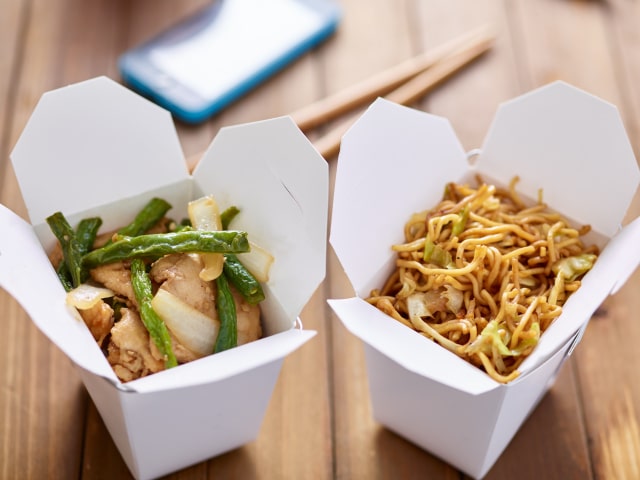Asian food from all corners, a gastronomy to enjoy with all five senses.
Having a food processor is a delight for lovers of the most varied recipes and flavors from all over the world. And we can enjoy the best Asian food without leaving our home, and tasting the genuine flavor that transports us to faraway places.
Therefore, do not hesitate to let yourself be carried away by this trip to the Far East, a place full of tradition and unique flavors in the world.
Talking about oriental food is a big word. There is a huge number of countries with their own millenary tradition in terms of cuisine. Ingredients you’ve never heard of and distinctive flavors are just some of the details of an endless menu.
Now imagine being able to enjoy the Mediterranean diet and oriental cuisine without leaving your kitchen, with recipes that will make you want to try the most exotic food from the Asian continent. Discover some of the most important places for oriental gastronomy before delving into some of the most exquisite recipes.
The Chinese giant
To talk about the depth of Chinese cuisine would take a long time, and is that within China itself we can distinguish up to a total of seven different regions.
But if something unifies all regions is the philosophical sense of gastronomy, based on the famous yin and yang: the balance between the different flavors and their intensity is sought, which translates into juicy and soft ingredients such as fruits and vegetables, and the contrast with spicy meats and fried foods.
One of the most famous dishes is chop suey, which can be prepared with different meats, or one of the thousands of rice dishes, the undisputed basis of Asian cuisine.
Japan’s millenary culture
If China is one of the places whose gastronomy has reached the furthest, we cannot ignore Japan, and if there is something we must highlight about this rich culture, it is its fish. Thanks to the fact that it is a large island, it has a millenary tradition when it comes to cooking and preparing fish, a technique that has been perfected without losing its origins, and which has become a true art.

One of its specialties is raw fish, as attested by two of the best known Japanese dishes, sushi and sashimi. But one of the curiosities of Japanese cuisine is the maritime influence of Portugal, which introduced into its diet seafood battered in very hot oil, an easy recipe of Japanese gastronomy.
India and the paradise of spices
And if talking about Japan means talking about fish, we can give color to India through the spices and condiments that give those unique flavors to its dishes. One of the best kept secrets is masala, a unique blend of aromatic herbs and seasonings, among which, of course, curry stands out.
But we must also talk about the French, English and Muslim colonial influence that gives rise to dishes like rogan josh, a lamb with chili sauce and yogurt, which shows the importance of dairy products in Indian cuisine.
Thailand and its mix of flavors
In Thailand, different influences from neighboring southeastern countries converge, filling the senses with very different aromas and tastes. The main characteristic of this gastronomy lies in the perfect mixture of flavors, combining acid, bitter, spicy, sweet and salty at the same time.
One of its star ingredients is coriander, from which everything is used. A clear example where we can see the fusion of Thailand is in the pad thai, a mixture of rice with different vegetables, chicken, tofu, nuts, spices and a side dish with fish sauce.
Korea’s hanguk yori, the great unknown
Chinese, Japanese, Indian and Thai food are the most recognized worldwide, but we must not forget Korea, whose cuisine, known as hanguk yori, also has a very strong gastronomic tradition.
Today, it is a clear reference of Asian cuisine, since it has been influenced by the other Asian giants, giving rise to dishes with a unique personality and flavor that have nothing to envy to the most famous Asian recipes worldwide.
Now we will discover some of the characteristics of Korean cuisine through one of its star ingredients, and some of the tastiest recipes.
Kimchi, cultural heritage
Thanks to the great globalization of gastronomy, kimchi has become in recent years a reference of Korean food around the world, becoming a luxury ambassador.
To get an idea, we can relate it to its distant cousin from Europe, sauerkraut. Although sauerkraut is slower to prepare, both are fermented. Kimchi starts with a base of dehydrated cabbage to which salt, garlic, fish sauce, ginger and the star ingredient, Korean chili flakes, are added.
As fermentation progresses, it will go through different stages, modifying its flavor and aroma to enhance its main characteristics, resulting in a crunchy and spicy fermented product.
Much of the success of this preparation lies in several aspects, and is that in addition to being a fermented very easy to prepare, its ingredients have probiotic effects, which consist of microorganisms that can help our body.

